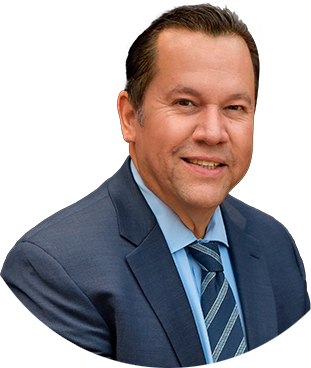California Health and Safety Code (HSC) 11370.1 makes it illegal to possess a controlled substance while also carrying a weapon. To face charges for this crime, you must have had a working, loaded firearm at the same time as having any quantity of a controlled drug listed under California law.
Possessing both a controlled substance and a firearm is an infringement of California’s Health and Safety Code 11370.1. Unlike some other felonies, if charged with possession of a controlled substance while armed, you will not be eligible for a felony diversion program. This blog covers in-depth everything you need to know about possession of a controlled substance while armed.
An Overview of Possession of a Controlled Substance While Armed Under California Law
The offense of possessing a controlled substance while armed is a felony that is criminalized under HSC 11370.1. This law applies if you are found with a working, loaded firearm at the same time as possessing an illegal drug.
Section 11370.1 specifically prohibits having substances like cocaine, methamphetamine, heroin, PCP, or similar drugs while also being armed with a loaded firearm. You should understand that breaking this law does not require that the firearm be used to hurt, threaten, or even show to others. Simply having both the gun and the drugs at the same time is enough to be charged with this serious drug-related crime.
Many cases of simple drug possession are treated as misdemeanors, which in some cases are not punishable by jail time. However, the situation becomes much more serious when a person is found in possession of both a controlled substance and a firearm.
Classification of Controlled Substances In California
California organizes controlled substances into 5 categories, known as schedules—ranging from Schedule I to Schedule V. Drugs in Schedule I are considered dangerous and addictive. At the same time, those on Schedule V are seen as the least severe with a lower risk of addiction. Below are examples of substances found in each schedule:
- Schedule I includes drugs like LSD, heroin, cannabis, psilocybin, and mescaline
- Schedule II covers substances such as oxycodone, raw opium, morphine, fentanyl, and cocaine
- Schedule III contains drugs like ketamine, anabolic steroids, and pentobarbital
- Schedule IV lists medications such as diazepam, zolpidem, and flunitrazepam
- Schedule V contains buprenorphine and certain therapeutic drugs that combine low amounts of narcotics with non-narcotic active medicinal components
California Health and Safety Code 11370.1 outlines that it is illegal to possess any quantity of substances such as:
- Cocaine
- Cocaine base
- Methamphetamine
- Heroin
- A crystalline form of phencyclidine (PCP)
- Plant material laced with PCP
- A liquid form of PCP
- A rolled cigarette infused with PCP
- Any analog of the substances mentioned above
This law criminalizes possession of these substances without lawful authorization.
What is a “Controlled Substance Analog”?
A “controlled substance analog” refers to:
- A substance that has a chemical structure similar to a controlled substance, or
- A substance that:
- Produces
- Is claimed to produce
- Is intended to produce
- Effects on the central nervous system, acting as a:
- Stimulant,
- Depressant, or
- Hallucinogen,
- With effects that are significantly similar to, or even stronger than, those of a controlled substance
Elements of The Crime That The Prosecution Must Prove
Under California Health and Safety Code 11370.1 HS, the prosecution must prove several elements to convict you of possession of drugs while armed. These elements include the following:
- You were found with a usable amount of a controlled substance.
- You were aware that you had the substance in your possession.
- You knew the substance was classified as a controlled drug.
- The controlled substance was one of those specified under Section 11370.1.
- The quantity of the substance was enough for consumption or use.
- While possessing the controlled substance, you had access to a loaded, functional firearm that could be used immediately for defense or offense.
- You knew the firearm was available and ready for immediate use.
Additionally, you can face separate charges for drug possession under California Health and Safety Codes 11350 HS or 11377 HS. Possession of drugs is treated as a distinct crime and is not considered a lesser charge than possession of drugs while armed.
Defining Possess
You are considered to “possess” a controlled substance if you have actual, constructive, or joint possession of it.
- Actual Possession—You have actual possession when:
- You are physically holding the substance, or
- It is on your person or in something you are carrying or wearing.
- Constructive Possession—You have constructive possession when you do not have the drug on you but:
- You have control over it, or
- You have the right to control it by yourself or someone else.
- Joint Possession—More than one person can possess the same controlled substance at the same time, which is referred to as joint possession.
Definition of “Usable Amount”
A “usable amount” of a controlled substance means there is enough of the drug for someone to use, even if it is not enough to cause a high or intoxication.
Armed
You are considered armed with a loaded, working firearm if you knowingly have the weapon available for immediate use, either for defense or offense. It is not necessary to physically hold the firearm to be considered armed.
Loaded Firearm
A firearm is classified as “loaded” when a shell, bullet, or cartridge is in a position where it can be fired. If the ammunition is not in the gun, it is not ready to fire and, therefore, not considered loaded under Health and Safety Code 11370.1.
Knowledge
To convict you under Health and Safety Code 11370.1 HS, the prosecutor must prove several key facts:
- You were in possession of a controlled substance.
- You were aware of its nature as a controlled substance.
- You were armed with a loaded firearm.
- You knew you had access to the firearm for immediate offensive or defensive use.
One of the biggest challenges for the prosecution is proving what you knew at the time. For example, if you were unaware that the controlled substance was present, you cannot be found guilty under this law. Likewise, if you did not know the substance, you have not violated Health and Safety Code 11370.1.
However, the prosecutor may try to demonstrate your awareness through direct or circumstantial evidence. This could include, but is not limited to:
- An admission that you recognized the drug (heroin, cocaine, methamphetamine, PCP, etc.).
- Statements made to others regarding the nature of the substance
- Evidence of your drug use
- Records of past drug-related offenses
In addition, you must know that the firearm was available for immediate use. Interestingly, you do not need to know that the gun was loaded. The responsibility lies with you to know or check if it was loaded. However, to be convicted under California Health and Safety Code 11370.1, you must have known the firearm was present.
Penalties for Possession of a Controlled Substance While Armed
Possessing a controlled substance while armed is classified as a serious felony under California law. If convicted, the penalties include:
- A prison sentence of two, three, or four years in a California state prison
- A fine of up to $10,000
No Drug Diversion as an Alternative to Prison
Normally, individuals convicted of simple possession of drugs for personal use may qualify for drug diversion programs, which allow for treatment instead of prison time. However, if convicted under Health and Safety Code 11370.1, you are not eligible for drug diversion programs, including:
- Proposition 36 (Substance Abuse and Crime Prevention Act of 2000)
- California Penal Code 1000 (Deferred Entry of Judgment or DEJ)
Despite this, you might still qualify for a suspended sentence and felony probation, depending on the specific details of your case and any prior criminal history. If granted felony probation, you could serve up to one year in county jail, but you will also be under court supervision for at least three years and up to five years.
Probation often comes with strict conditions, such as:
- Mandatory drug counseling or treatment
- Regular drug testing
- Payment of fines
- Meetings with a probation officer
- Warrantless searches of your person or property
- Community service or labor, like roadside work for Caltrans
- A prohibition on drug use and further legal violations
- Any other conditions deemed reasonable by the court
Failure to follow these conditions could revoke your probation, potentially resulting in prison or jail time.
Other Consequences of a Felony Conviction
A felony conviction in California can carry the following collateral consequences:
- A lifetime ban on owning or possessing firearms
- The obligation to disclose your conviction on job applications when asked
Defending Against Possession of Controlled Drugs While Armed
California’s Health and Safety Code for possessing a controlled substance while armed (HSC 11370.1) contains many elements, making it one of the more manageable crimes to defend against. The prosecution must establish seven specific elements, several hinge on the defendant’s knowledge.
A strong defense often focuses on the element of knowledge. In criminal law, the Latin term mens rea means “guilty intent.” This refers to the intent or awareness of wrongdoing required for conviction. Without the requisite knowledge or intent, one cannot be found guilty.
Three of the seven elements of the offense in this case relate to the defendant’s awareness:
- The presence of a controlled substance.
- The nature of that substance.
- The presence of a firearm.
Proving this level of knowledge presents a challenge for the prosecutor. While knowledge is critical in most crimes, it plays the primary role in this case and is a target for defense arguments. A conviction is impossible if the defendant can show that he is ignorant of these three aspects.
The prosecution can use various direct and circumstantial evidence to prove knowledge. One way of proving this is through statements made by the accused to police officers immediately after the arrest.
Everyone has the constitutional right not to incriminate themselves, and it is advisable to provide as little information as possible. Depending on the specific circumstances of the arrest, several other defenses may be available, including:
- Proving that the substance the defendant was found with is not classified as a controlled substance under the law
- Presenting evidence that law enforcement found the drugs and firearm following an illegal search of the defendant’s property or person
- Claiming that you did not have a firearm at the time of arrest or that the item in question was not a firearm
- Arguing that the prosecution does not have enough evidence to meet the required burden of proof for a conviction
- Showing that the firearm was not loaded at the time of the arrest for possession of a controlled substance
Related Offenses
Below are some offenses related to possession of a controlled substance while armed:
California HSC 11350
“Controlled substance” encompasses a wider range of substances than under Health and Safety Code 11370.1. In this context, it refers to any drug or chemical whose production, possession, and use are regulated by the government through the California Uniform Controlled Substances Act.
This category includes a variety of drugs, such as cocaine, heroin, methamphetamine, and PCP, as well as others like:
- Peyote
- Gamma-hydroxybutyric acid (GHB)
- Hallucinogens, such as LSD
- Codeine
- Vicodin
- OxyContin
- Barbiturates
- Ketamine
- Fentanyl
Possessing most controlled substances, except for GHB, is considered a felony in California. This can lead to penalties such as:
- 16 months, or two to three years in county jail
- A fine of up to $1,000
- Felony probation
Possession of GHB and certain other depressants is classified as a “wobbler” offense. If prosecuted as a felony, it carries the penalties mentioned above. If charged as a misdemeanor, the potential punishments include:
- Up to one year in county jail
- A fine of up to $1,000
- Misdemeanor probation
Carrying a Concealed Weapon Under PC 25400
California PC 25400 makes it illegal to knowingly have a concealed firearm on your person or inside a vehicle. However, if you have the legal right to own a gun, you may generally carry a concealed firearm in:
- Your home
- A business that you own (not just a place where you work)
Without aggravating factors, carrying a concealed weapon without proper authorization is considered a misdemeanor. The penalties can include:
- Up to 12 months in jail
- A fine of up to $1,000
In some situations, carrying a concealed weapon can be classified as a felony or as a “wobbler” offense in California. You commit a felony under PC 25400 if:
- You have a prior felony conviction or any other firearm-related offense in California
- The weapon is stolen
- You should have known or knew the weapon was stolen
- You do not have legal possession of a firearm
- You actively participated and are a member of a criminal gang
- You are prohibited from possessing or owning a firearm under PC 29800 (Law regarding felons with firearms)
- You are prohibited under PC 29900 from engaging in or trying to perpetrate a violent crime
As a felony, the penalties for carrying a concealed firearm can include:
- 16 months, or two to 3 years in California state prison
- A fine of up to $10,000
Carrying a concealed firearm can also be a wobbler offense if:
- You have a prior misdemeanor conviction for a crime against a person or property or involving narcotics
- The firearm is loaded, or the ammunition is easily accessible to you, and you are not the registered owner of the gun, according to the California Department of Justice
If charged as a misdemeanor, the penalties include the following:
- Not more than one year in county jail
- A fine not exceeding $1,000
If charged as a felony, you could face:
- 16 months, or two to three years in state prison
- A fine of up to $10,000
Do I Need to Hire a Defense Attorney To Help with My Criminal Charges?
A charge involving controlled substances can result in severe legal consequences, especially if firearms or other weapons are involved. The penalties include imprisonment and substantial fines. Therefore, you should consult a drug crime attorney for legal counsel if you have been arrested and are dealing with such charges. A lawyer experienced in drug cases can inform you about your rights and the options available under the criminal laws in your area.
In addition, your attorney will protect your rights by representing you in court and all proceedings associated with your case. These include:
- Motion hearings
- Appeals
- Plea negotiations
They can also do research to determine possible defenses to your controlled substance charge. If you need help with an appeal, want to explore alternative sentencing options, or have questions about your charges and case, your attorney can handle all these legal matters.
Contact a Criminal Defense Lawyer Near Me
Suppose you or someone you care about has been charged with violating California’s Health and Safety Code regarding possessing a controlled substance while armed (HSC 11370.1). In that case, we encourage you to contact the Los Angeles Criminal Lawyer. Our skilled attorneys are ready to support you in court through strong legal representation to obtain the best possible outcome. Contact us today at 310-502-1314 to schedule a consultation with one of our attorneys.
















